Hello, everyone. This year, Amami Oshima has been designated by the Ministry of Tourism as a model tourist destination for inbound tourism.
In conjunction with this, last week a monitor tour for adventure travel was held in Amami Oshima, and I’d like to introduce it today.
Participants on this tour included a travel agency from Okinawa, a male through-guide from Okinawa, and the editor-in-chief of an outdoor magazine, who all guided a 4-day, 3-night itinerary.
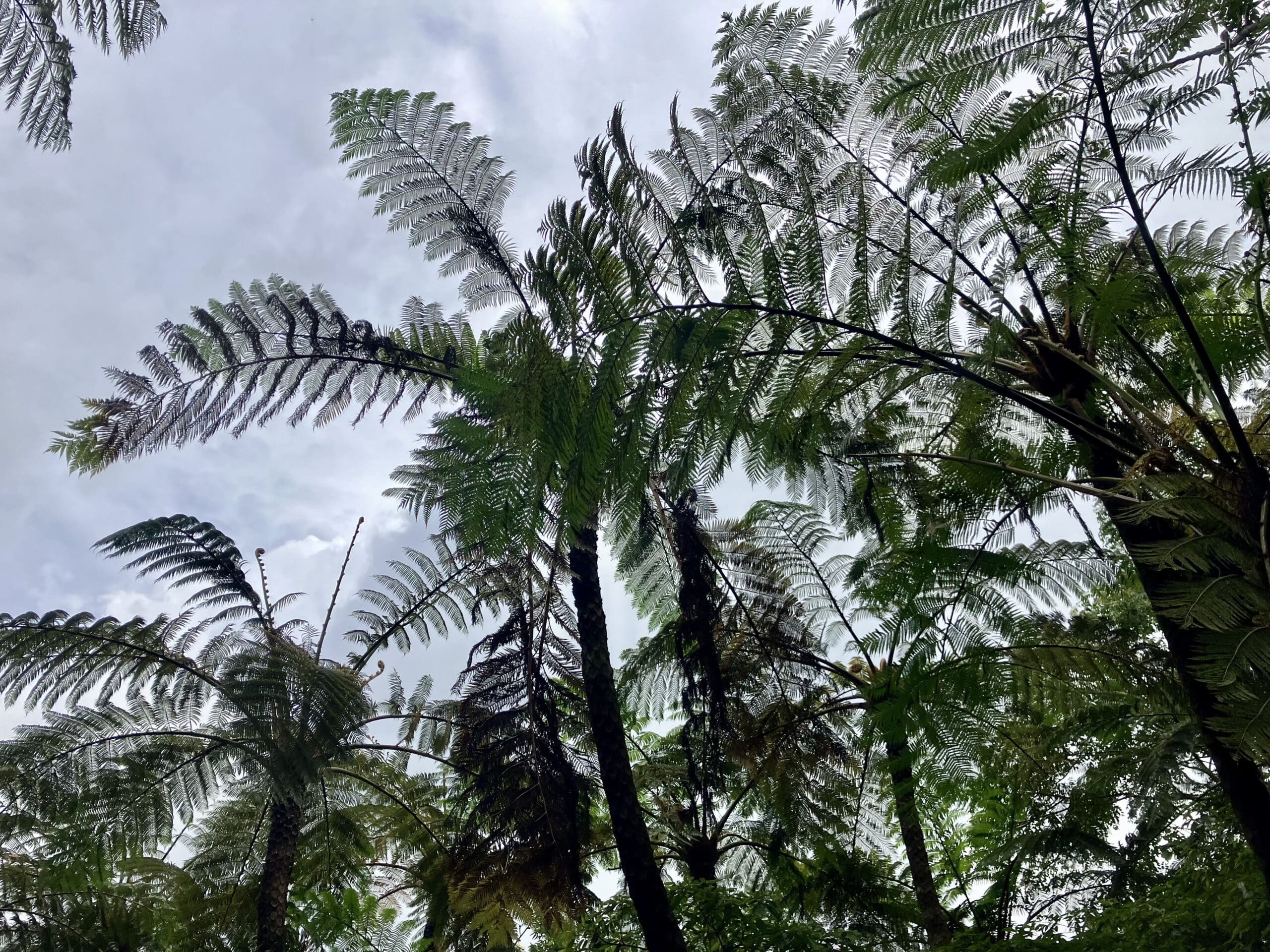
Adventure travel is a high-level tour consisting of nature, culture, and activities, where participants experience intense activities and gain a deeper understanding of local traditions and culture. With my guiding on this occasion, I focused on these aspects during the tour.
Major Destinations of This Tour
- World Heritage Conservation Center
- Mt. Yuwandake
- Mangrove Forest
- Tomita Distirally
- Oshima Tsumugi Village
- Higo Senshoku Mud dyeing
Reflection on the Adventure Travel Tour
Let’s look back at the main activities of this tour: cycling, kayaking, and mud-dyeing.
Cycling
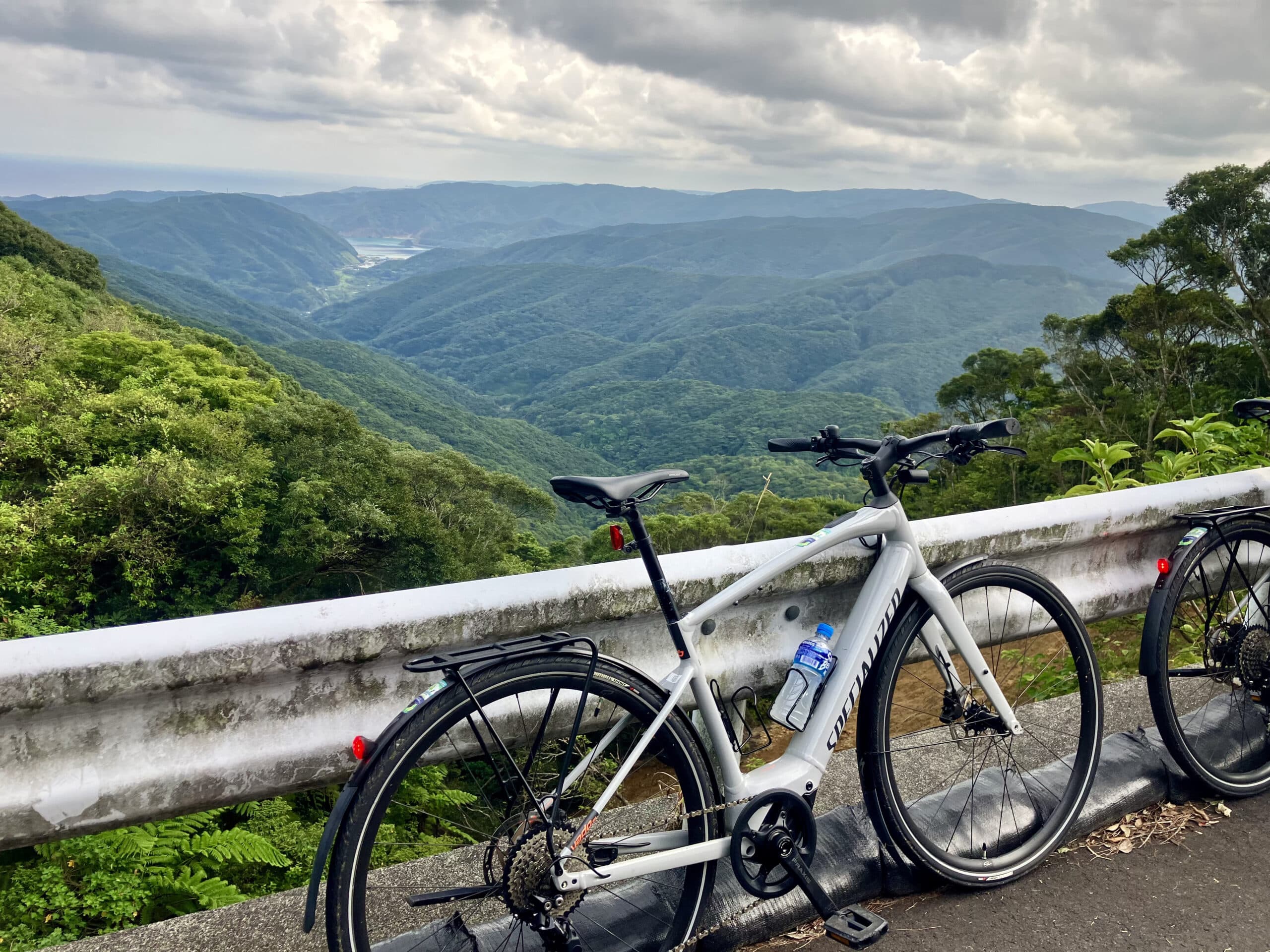
We cycled from the Sango Beach guesthouse in Yamato Village up to the 620-meter mark at the 9th station of Mt. Yuwandake. Along the way, we made several stops, discussing the scenery and local villages as we ascended. As the view gradually opened up, we headed to Materia Falls. At the participants’ request, we swam in the waterfall basin. The cold water was refreshing, soothing our bodies after the uphill ride. At our midpoint stop, Forestpolis, we were treated to drinks before pushing on to the summit. After a 20-minute walk along the Mt. Yuwandake, we enjoyed lunch at the peak.
In this tour, we didn’t include a downhill ride, opting to move to the next destination by car. However, some participants suggested adding a downhill ride, ending with a swim in the sea.
Kayaking
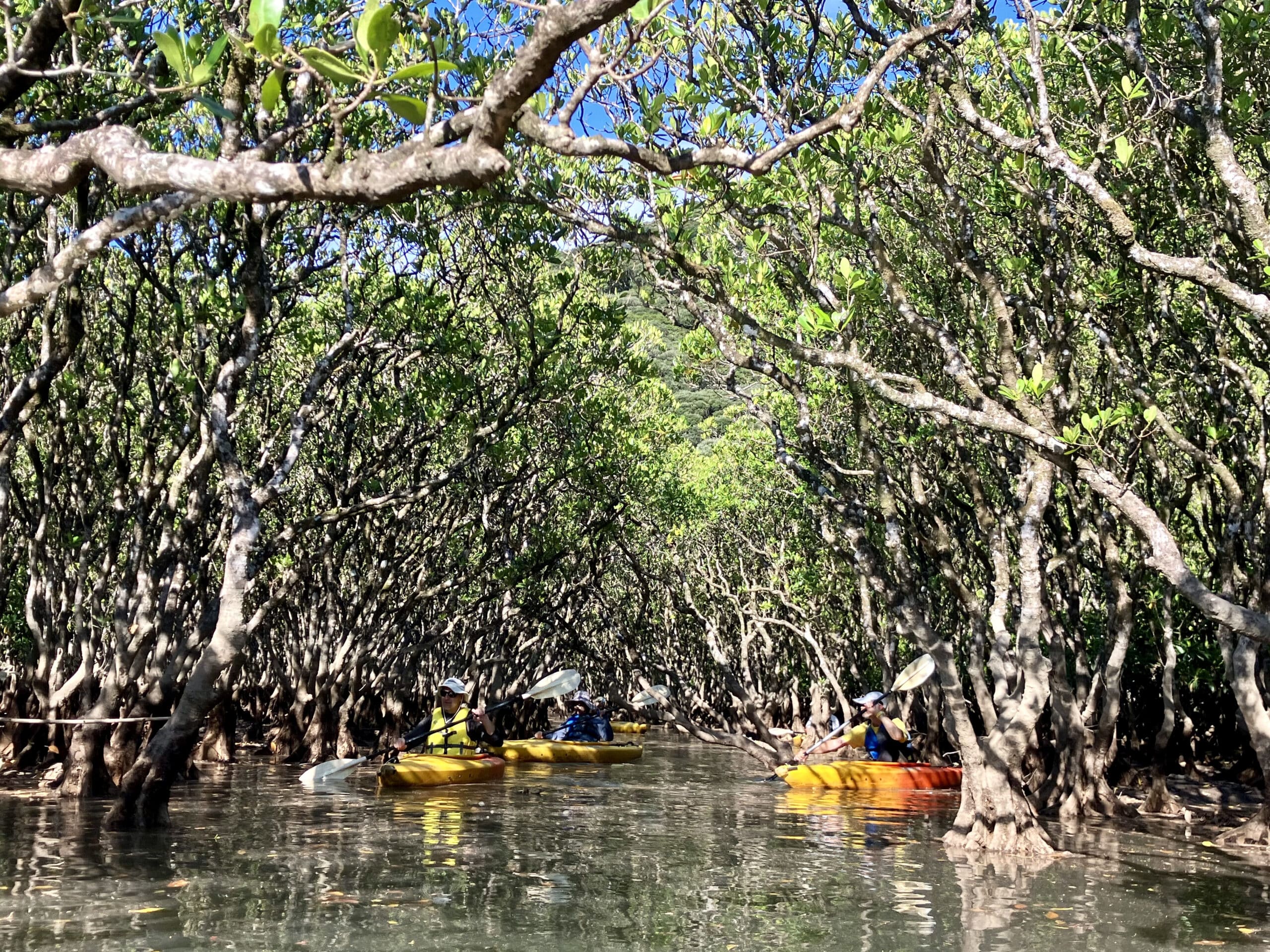
We started kayaking as the tide was coming in. First, we explored the tidal flats, observing creatures like crabs and mud skippers. It was a spring tide that day, and the water quickly surged in, flooding the tidal flats, much to the participants’ delight. Afterward, we paddled through the mangrove tunnels, explaining the deep connection between the local people and the unique mangrove environment.
Mud dyeing
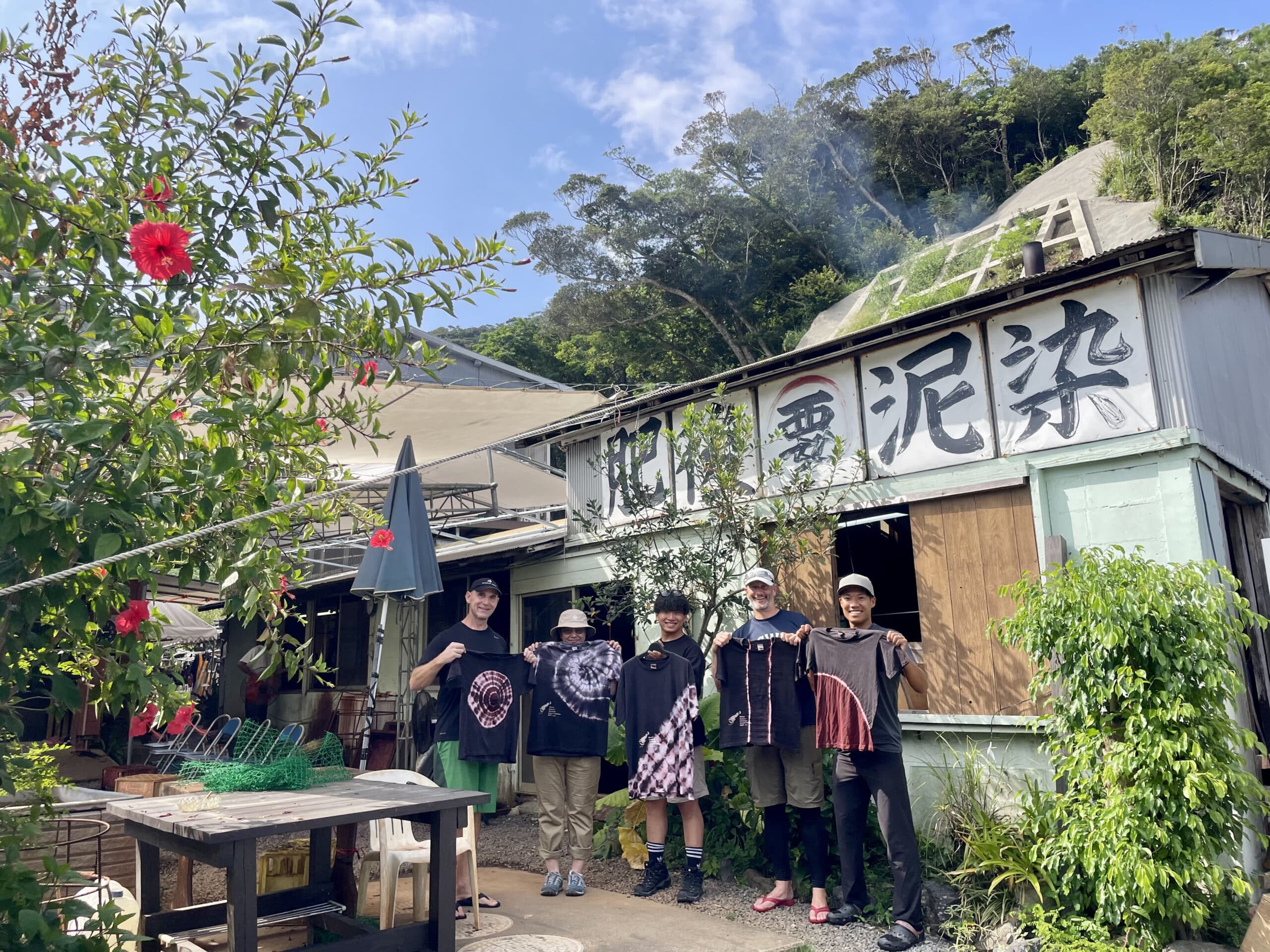
Mud-dyeing is a traditional dyeing method that has been passed down in Amami Oshima for long time. Before the experience, we reviewed the production process of Oshima Tsumugi. At Oshima Tsumugi Village, participants could observe all stages of the process, from dyeing to weaving. They were fascinated by the meticulous and delicate techniques of Oshima Tsumugi and had many questions.
Afterward, we visited a traditional dyeing workshop, Higo Dyeing, for a hands-on dyeing experience. Here, participants had the opportunity to dye their own fabric using traditional methods. Additionally, we were fortunate to experience the laborious task of removing large baskets filled with chips from the Sharinbai tree, a task that artisans perform weekly.
Brash-up Adventure Travel
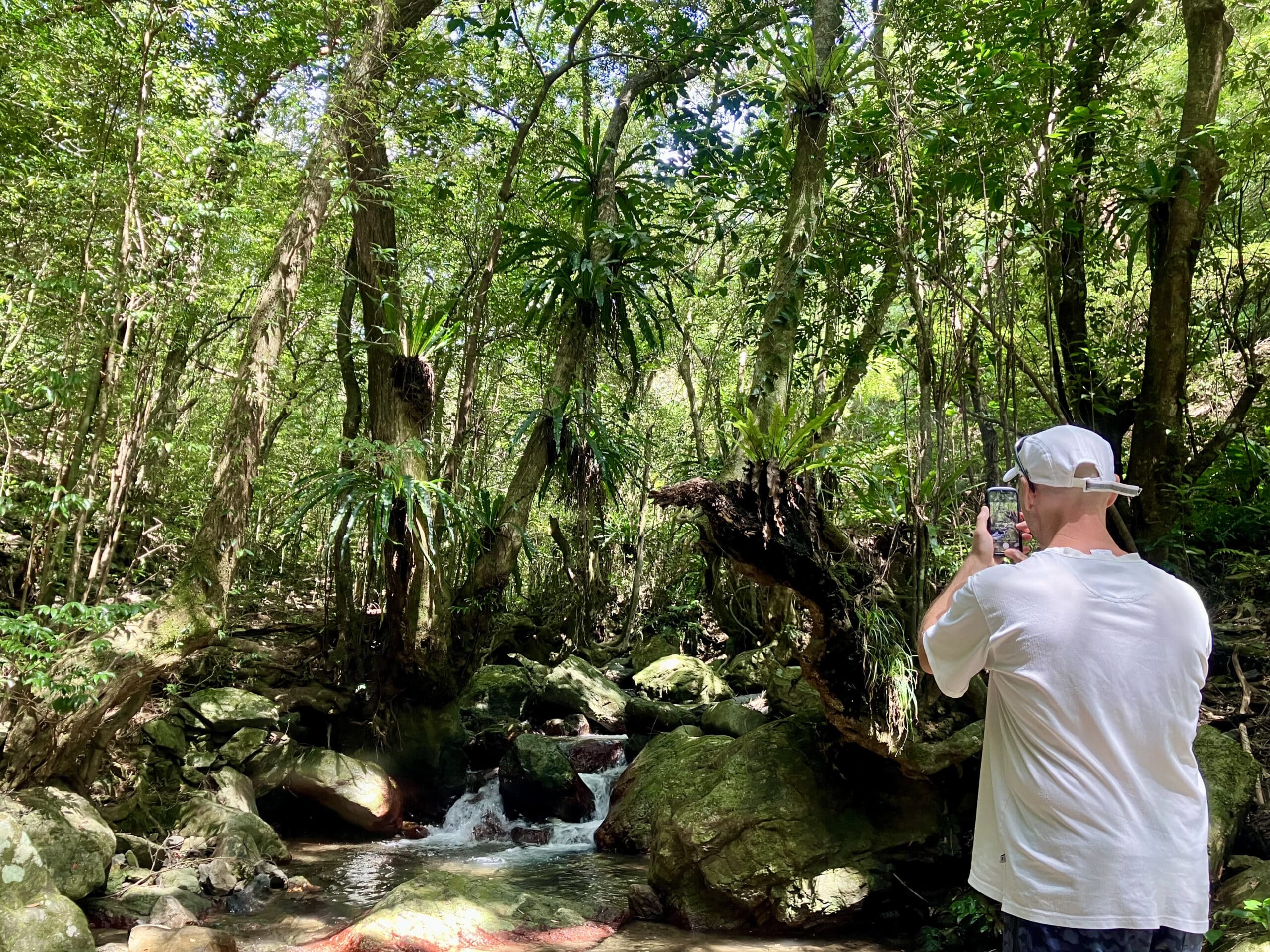
This tour included many of the routes I usually guide, so many aspects were familiar. However, I felt that to elevate it further as an adventure travel experience, creative improvements are necessary. For instance, incorporating surprises like local fruits after activities to allow time for reflection, or developing a cohesive story that connects the entire itinerary could enhance the experience. In some cases, it might be necessary to completely redesign the itinerary.
Feedback from participants suggested adding sea activities such as SUP (stand-up paddleboarding) and snorkeling, highlighting the significance of the places visited, and providing additional tips for ensuring participant comfort.
Based on this tour’s experiences and feedback, I will work on improving and refining the adventure travel offerings in Amami Oshima to create an even better experience.
